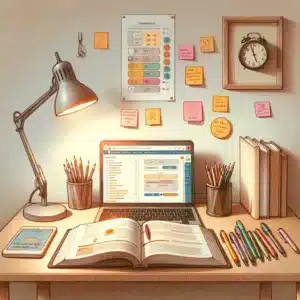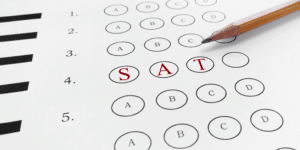Young children love to draw — and learning to form letters is an important component of their literacy development. If you’ve noticed that your child struggles with drawing or writing, then learning about the symptoms, diagnosis, and treatment for dysgraphia can help you understand the supports he or she may need.
Dysgraphia
As children begin to draw and write, parents sometimes notice that their kids hold crayons or form letters in a peculiar way. If you wonder whether these habits are common to all kids or possible symptoms of a learning disability, read on to learn more about dysgraphia (which is also sometimes called “Specific Learning Disorder with Impairment in Writing”).
Description
Dysgraphia is a learning disability that affects an individual’s facility with writing. Those with the disorder primarily have difficulty with what’s known as the “graphomotor task” of writing — that is, the physical production of writing. Such difficulties arise from disruptions to the brain’s neural networks guiding fine motor coordination, and they can manifest as issues with letter formation, tracing, and sometimes drawing. Individuals with dysgraphia may also have trouble with spelling or writing structure, such as not understanding how to formulate a paragraph, or what the mechanics of a longer story are.
Dysgraphia is not to be confused with dyspraxia, which is a more general difficulty with motor skills and not primarily a writing-related disorder.
Symptoms
According to the International Dyslexia Association’s San Diego Branch, there are three sub-types of dysgraphia:
- One that overlaps with dyslexia, and is mainly a spelling or writing disorder but not a fine motor disorder.
- One that is mainly related to motor control, and tends to result in difficulty with a range of written and fine motor skills.
- One that is mainly spatial, and leads to difficulty with writing and drawing tasks but not with spelling.
Characteristics
- Limited written language (even without time constraints, and when previous instruction about the written task has been provided).
- Poorly formed letters, or ones that are inconsistent in size, spacing, and distance from the line on which they’re written.
- Difficulty organizing thoughts on paper, and spoken language skills that significantly surpass written abilities.
- The tendency to hold a writing instrument in an unusual way.
- Slow, incomplete, or laborious note-taking or copying practices.
- Complaints of hand or wrist pain after writing.
- Avoidance of writing tasks.
- Tendency to speak out loud while writing.
Diagnosis
If you recognize characteristics of dysgraphia in your child, here are factors to consider as you seek out a diagnosis.
Diagnostician and Testing
A psychologist or neuropsychologist can diagnose dysgraphia. An evaluation includes information about family history, developmental milestones, and academic history (including writing samples), as well as tests of intelligence, academic achievement, and activities that assess fine motor functioning (e.g., tracing and drawing). Additionally, the evaluator may ask for questionnaires from parents and teachers. A dynamic assessment may also provide insights into which supports are most likely to help your child (e.g., typing vs. writing by hand vs. dictation).
Age of Diagnosis
Dysgraphia is not typically diagnosed until a child is school-aged. While letter formation and other types of motoric dysgraphia can be diagnosed at the age of five or six years old, some diagnostic tools, such as the norm-referenced Test of Written Language (TOWL-4), are only appropriate for students nine years of age or older, since they will have had more experience with writing instruction and the complexities of written language.
Prevalence
There is minimal research on the prevalence of dysgraphia, in part because it overlaps with other language-based learning disabilities and may be subsumed in these categories. It’s also possible that the disorder may not have been accurately diagnosed in the past, due to the absence of effective diagnostic tools and appropriate training of evaluators. For these reasons, many experts consider prevalence data to be unreliable. One study out of the Jaipur region of India estimates the prevalence to be about 22 percent of the school-aged population, though it’s difficult to know if this figure is high or low without reliable data to which it can be compared.
The Brain and Dysgraphia
Motor writing skills have been correlated with the left, frontal portion of our brains, while other fine motor movements are controlled by the cerebellum (near the back of the brain and the brainstem). Most of the research on dysgraphia has been done on adults, and brain mapping demonstrates that difficulties associated with dysgraphia primarily arise in the parietal lobe (which is further back in the brain than the frontal lobe). This neurological area is integral to processing visuospatial information — such as writing — as well as motor signals involved with eye, hand, and arm movements. Due to these discrepancies, further investigation is needed to determine which neurological regions are primarily involved in developmental dysgraphia.
Recognition of the Positives
Although dysgraphia introduces learning difficulties, these can be mitigated. There are also positives to accompany the challenges posed, including the following:
- Although they may experience frustration, children with dysgraphia do not typically experience social problems.
- Students with dysgraphia typically do not have other fine motor difficulties, so they can capably play instruments, tie shoes, and type.
- Assistive technology can support students with dysgraphia with many tasks, from easing the motoric burden of writing, to teaching writing mechanics.
- Recording devices (another type of assistive technology) are becoming increasingly popular and accessible: Tools like Evernote, Notability, and Livescribe are particularly helpful for note-taking and recording.
Evidence-Based Interventions
There are a number of approaches that can help people with dysgraphia meet the challenges of this disability.
Occupational Therapists
Occupational therapists (OTs) are professionals who can work with children on handwriting skills. Using writing-related tasks designed to provide frequent practice with letter and word formation, children can become quicker and more accurate with their letter formation, and thus find the process of writing less effortful. A multisensory approach to writing instruction can be used to teach cursive or print. This builds upon other neural networks, such as motor, auditory, and visual pathways.
Look for OTs who use a research-validated technique, such as a multisensory approach, which has children say aloud how to form each letter as they are doing so. Best practices in handwriting intervention dictate that this skill should be:
- Taught directly.
- Implemented in brief daily lessons.
- Matched to the individual needs of the child.
- Planned and changed based on evaluation and performance data.
- Used in a meaningful manner by the child.
OTs should also use practices such as tracing, copying, and composing to help children develop the skills that will enable them to meet the challenges of dysgraphia.
Teachers, Learning Specialists, and Speech Language Pathologists
These professionals can all work with students to teach them how to structure their writing. By using strategies that teach the mechanics of written work — for example, that a paragraph has a topic sentence, details and evidence, and a concluding thought — children can learn how to produce various types of writing independently. Once they have learned this framework, they can then focus on their ideas and placement within a piece of writing, rather than on the underlying structures of an essay.
Typing
Typing can alleviate some of the motoric and emotional stress that accompanies writing by hand, but it should be introduced thoughtfully. Although it may be appealing to switch to this support early, studies have shown that taking notes by hand improves long-term comprehension. As children are first learning to write, stronger neural connections are formed between sounds and letters when kids physically form the shapes by tracing or writing, according to research from Karin James and Laura Engelhardt. For this reason, typing should not be introduced as a total substitute for handwritten note-taking practices.
Assistive Technology and Other Supports
Assistive Technology (AT) — such as dictation software — can be incorporated into many areas of students’ (and adults’) lives. AT can enable individuals to share their ideas without the burden of writing by hand. AT and mechanical supports, such as pencil grips or slant boards, can help students with dysgraphia communicate their ideas clearly and effectively in writing.




